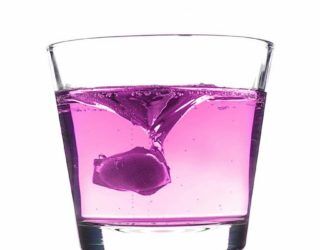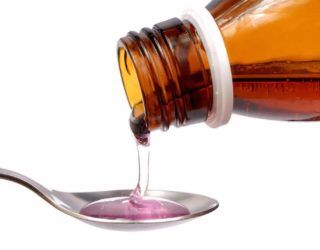Opioid-derivative drug abuse has become a significant public health crisis in the U.S. More people have died from opioid-related overdoses than Americans were killed during the Vietnam War. When people think of opioid addiction, they mostly think that a person is abusing prescription pills, Fentanyl patches, or even heroin. But the substance lean, a drink made from codeine, is responsible for numerous overdose deaths and addictions.
Lean Abuse: Signs, Effects and Treatment Options


Substance Abuse
What is Lean and How is it Abuse?
What is Lean?
Lean is an addictive, illicit drink made from codeine cough syrup, which is a medicine derived from the opium plant. Codeine is considered one of the weaker opioids on the market, but it can still get a person high, and it is still highly addictive. Lean is also called Purple Drank, Sizzurp, and Dirty Sprite. People mix codeine with soda, and sometimes a hard candy like Jolly Ranchers to make lean.
When was it invented?
Starting in the middle of the 20th century, blues musicians in the American South first created today’s modern version of lean by mixing Robitussin with beer. In the 1980s, rappers in the Houston area began to mix codeine with soda and hard candy to make lean. The drink became popular among the music scene and has been glamorized in many songs and rap lyrics. Lean has caused numerous deaths among musicians and rappers around the world.
Who is most at-risk of abusing lean?
Anyone can become addicted to drugs or alcohol because these substances interact with the brain and body in the same way for every person. Researchers still can’t predict who will or who won’t become addicted to any drug. But there are a few known risk factors that increase a person’s chance of abusing lean:
- Being a part of the hip hop entertainment industry
- Being a young male between the ages of 12 and 25
- Belonging to a lower socioeconomic group
- Having a lower education level
- Having a close relative with a substance use disorder
- Having an untreated mental health disorder
The DEA estimates that one in ten teenagers abuses codeine cough syrup by making drinks like lean or dirty sprite. Every year, around three million teens and young adults will abuse codeine to get high.
Lean is commonly abused in the entertainment industry scene, and people will use lean as a way to calm pre-performance jitters or to fit in with their industry peers. Several celebrities have been hospitalized from mixing lean with other drugs like marijuana. Also, having a mental health disorder can also increase the chances of a person abusing lean and becoming addicted. People with mental health disorder symptoms will use drugs and alcohol to alleviate distressing symptoms.
What are the effects of lean?
Lean gets its name because the drink will make people slouch or ‘lean’ to the side as they get high on the substance. The active ingredient in lean, codeine, impacts users in a way that’s similar to other opioid-derivative drugs. After drinking lean, the effects of the substance become apparent within a half hour to 45 minutes. Adding more codeine to a drink can shorten the onset of the effects. Effects tend to peak within an hour or two after drinking, and they can last for up to six hours per drink. When people drink lean, the following side effects will occur:
- Euphoria, or high
- Dizziness
- Depressed breathing
- Slowed heart rate
- Constipation
- Loss of coordination
- Slurred speech
- Impaired vision
Drinking lean can also cause seizures in some at-risk individuals. Drinking a large amount of lean in a short period, or mixing the drink with other drugs or alcohol can also depress respiratory rate to dangerous levels and cause hallucinations. People can become comatose, stop breathing, and die. The long-term effects of lean abuse are also serious. Individuals can experience memory loss, cognitive decline, dental decay, weight gain, and frequent urinary tract infections.
Is lean dangerous?
Because codeine is a legal drug and is considered a weaker opioid, many people may mistakenly believe that lean isn’t dangerous or addictive. Furthermore, the glamorization of lean in pop culture and on social media can also make someone think that drinking lean isn’t taking a gamble with their health.
The first time a person drinks lean, their body starts to build a tolerance. The more a person uses lean, the more a tolerance develops. When this process begins, the body becomes used to having lean in its system, and when someone stops taking lean or tries to cut back on how much they drink, withdrawal symptoms will occur. During the process of addiction, a person will need lean just to feel normal. Abusing opioids like codeine in lean can also cause life-threatening health issues.
When someone consumes a large amount of lean or mixes lean with another drug, the brain will become flooded with opioid chemicals, and it won’t be able to regulate or decrease their effects. These opioid molecules will depress a person’s ability to breathe, and their respiratory rate may completely shut down. It only takes six minutes of oxygen deprivation for brain death to occur. Even if emergency services can save someone and restore their respiration, depriving the brain of oxygen for just a short period can cause cognition and memory issues for the rest of the person’s life.
When someone tries to quit lean, they will experience painful withdrawal symptoms that are present in other opioid addictions, including the following:
- Shaking
- Hot and cold flashes
- Sweating and chills
- Flu-like symptoms
- Aches and pains
- Nausea and vomiting
- Intense cravings for the drug
Withdrawal symptoms can make it extremely difficult to quit drugs like lean. But medically-assisted detox can lessen the severity and symptoms of withdrawal when a person attends rehab.
If you or a loved one are addicted to lean or codeine cough syrup, the experienced drug abuse counselors and doctors at Windward Way can help. Please contact the representatives at Windward Way today to explore your options for detox and rehab.





